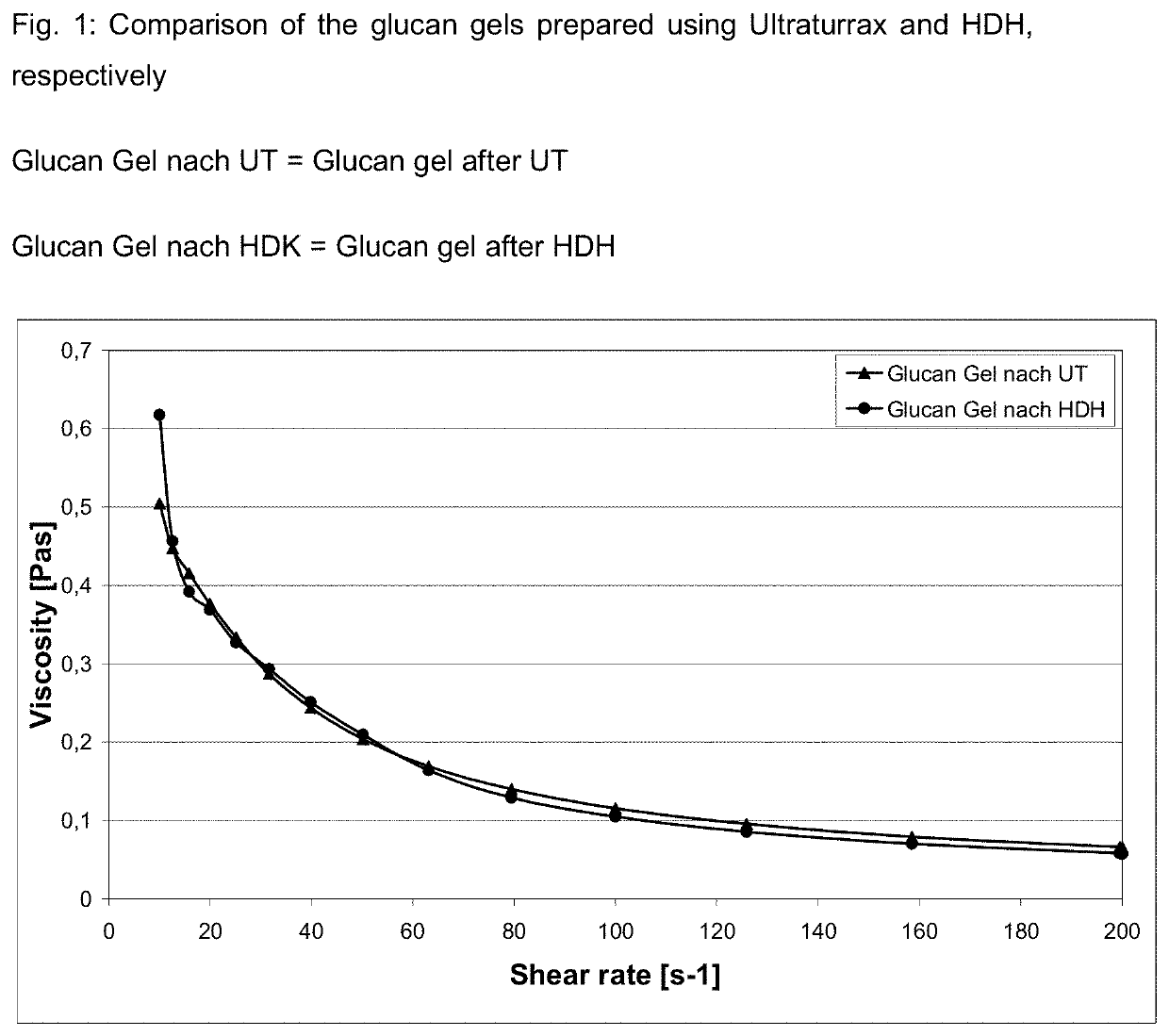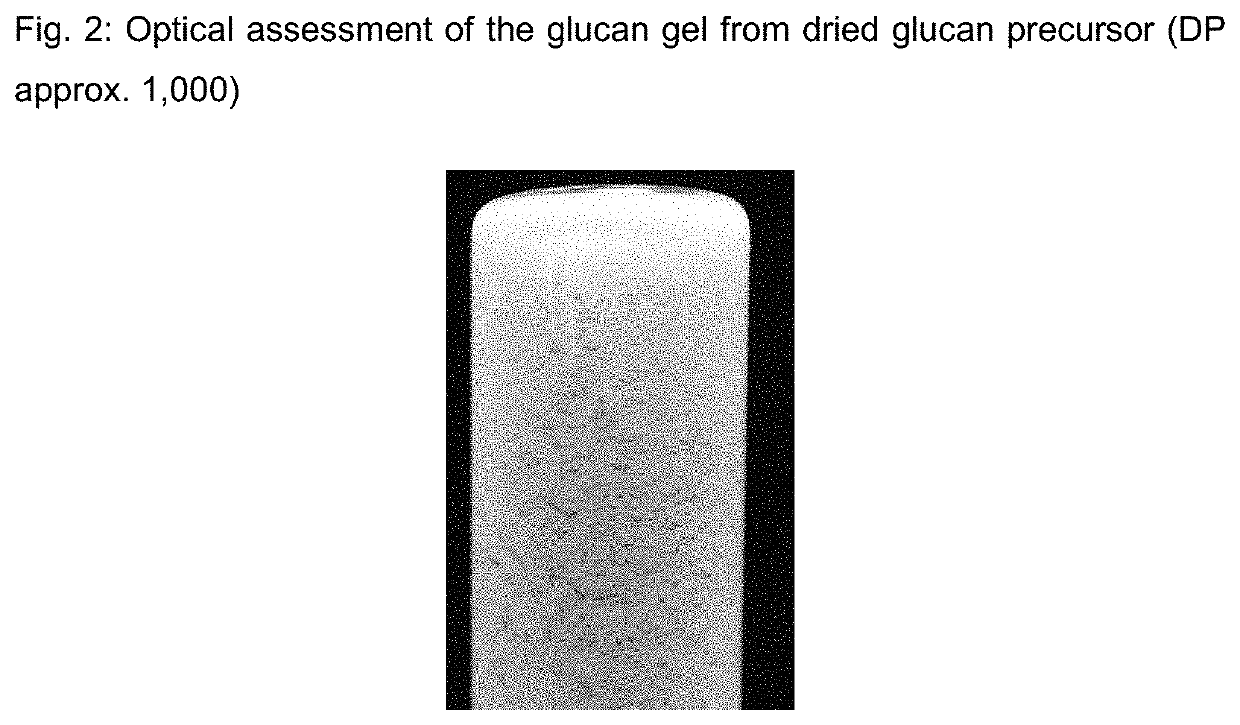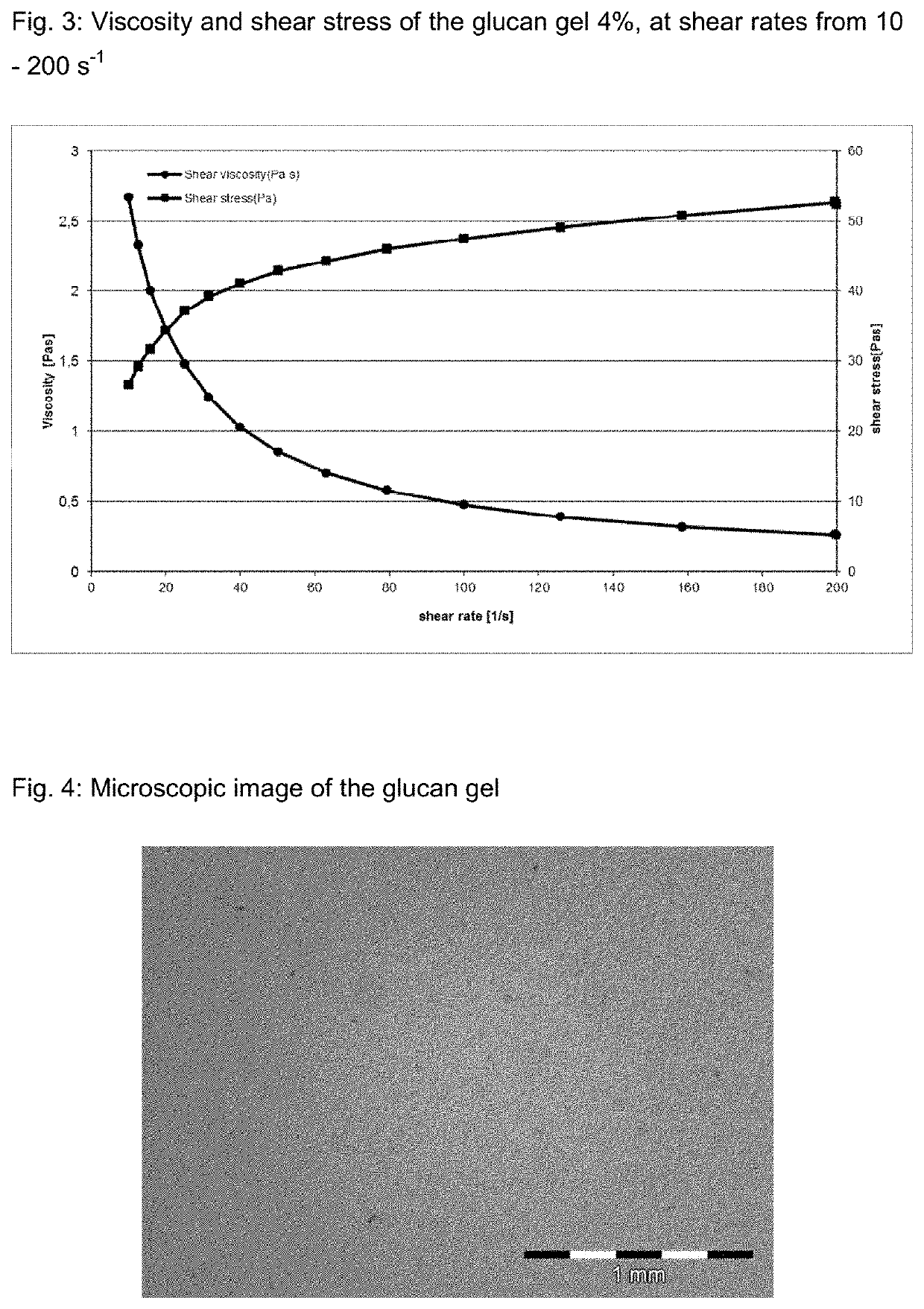Polysaccharide suspension, method for its preparation, and use thereof
a polysaccharide and suspension technology, applied in the direction of dextran adhesives, coatings, etc., can solve the problems of sporadic defects in the polysaccharide chain, substances do not form stable colloidal suspensions,
- Summary
- Abstract
- Description
- Claims
- Application Information
AI Technical Summary
Benefits of technology
Problems solved by technology
Method used
Image
Examples
example 1
[0050]A press cake of water-containing, initially moist α(1→3)-glucan (dry matter content=17.6% by weight) is suspended in deionized water and, using an Ultraturrax® (“UT”), type IKA T50 basic, 6,000 rpm, is comminuted for 4 minutes. In this experiment, the suspension to be comminuted contained 3.05% by weight of α(1→3)-Glucan (atro). The suspension prepared in this way was divided into two subquantities, and one subquantity was additionally pumped in circulation via a high pressure homogenizer (HDH), type GEA Niro Soavi NS 1001L-2K, operating pressure 1,000 bar, for 2 passes. Then, the two glucan suspensions were characterized based on viscosity and water retention capacity.
[0051]The water retention capacity (WRC) of the glucan particles was determined as follows: an exactly defined quantity of suspension was introduced into special centrifuge tubes (with a drain for the water). Then, centrifuging was carried out for 15 min at 3,000 rpm, and the moist glucan was weighed immediately...
example 2
[0057]By preparing a bigger quantity of glucan gel (4% by weight) in a pilot-plant-based experiment with a colloid mill (IKA Colloid Mill MK2000 / 10), it was to be demonstrated that even large quantities of polysaccharide can be processed into a homogeneous suspension without the use of high pressure homogenizers.
[0058]From 3.69 kg of never-dried, initially moist α(1→3)-glucan (TS=16.25%) and 11.3 kg of water, a glucan gel having a solids content of 3.9% was prepared by grinding in the colloid mill (IKA Colloid Mill MK2000 / 10). After 15 minutes of grinding with a gap of 0.1 mm at maximum output, the glucan gel was ready. Subsequently, it was characterized as follows:
[0059]Viscosity: the glucan gel was measured on the Malvern Kinexus rheometer with a cone plate measuring system (CP4 / 40 S0687 SS) in a shear rate range from 10-200 The suspension according to the invention exhibited shear-diluting behavior (FIG. 3).
[0060]Microscopy: the glucan gel was filled between two microscope slides...
example 3
[0067]Glucan gels having different solids concentrations were produced in a manner similar to Example 2. As the solids content increases, the viscosities of the suspensions increase (FIG. 9), while the water retention capacity (WRC) decreases. While suspensions having a solids content of 3 and 4% can still be processed with an HDH, suspensions having a solids content of 5% can only be comminuted with a device with lower shear such as an Ultraturrax IKA T50 basic (“IKA”), as the HDH is unable to pump such highly viscous suspensions. Table 3 shows that, as the solids content increases, the viscosity increases, but the WRC decreases at the same time.
TABLE 3Comparison of viscosities and WRC of thevarious glucan gels after comminution.Treatmentafter HDHafter IKAafter UTTS [%]345WRC [%]15381504506Viscosity [50s−1]0.20090.85551.731
PUM
| Property | Measurement | Unit |
|---|---|---|
| diameter | aaaaa | aaaaa |
| operating pressure | aaaaa | aaaaa |
| concentration | aaaaa | aaaaa |
Abstract
Description
Claims
Application Information
 Login to View More
Login to View More - R&D
- Intellectual Property
- Life Sciences
- Materials
- Tech Scout
- Unparalleled Data Quality
- Higher Quality Content
- 60% Fewer Hallucinations
Browse by: Latest US Patents, China's latest patents, Technical Efficacy Thesaurus, Application Domain, Technology Topic, Popular Technical Reports.
© 2025 PatSnap. All rights reserved.Legal|Privacy policy|Modern Slavery Act Transparency Statement|Sitemap|About US| Contact US: help@patsnap.com



